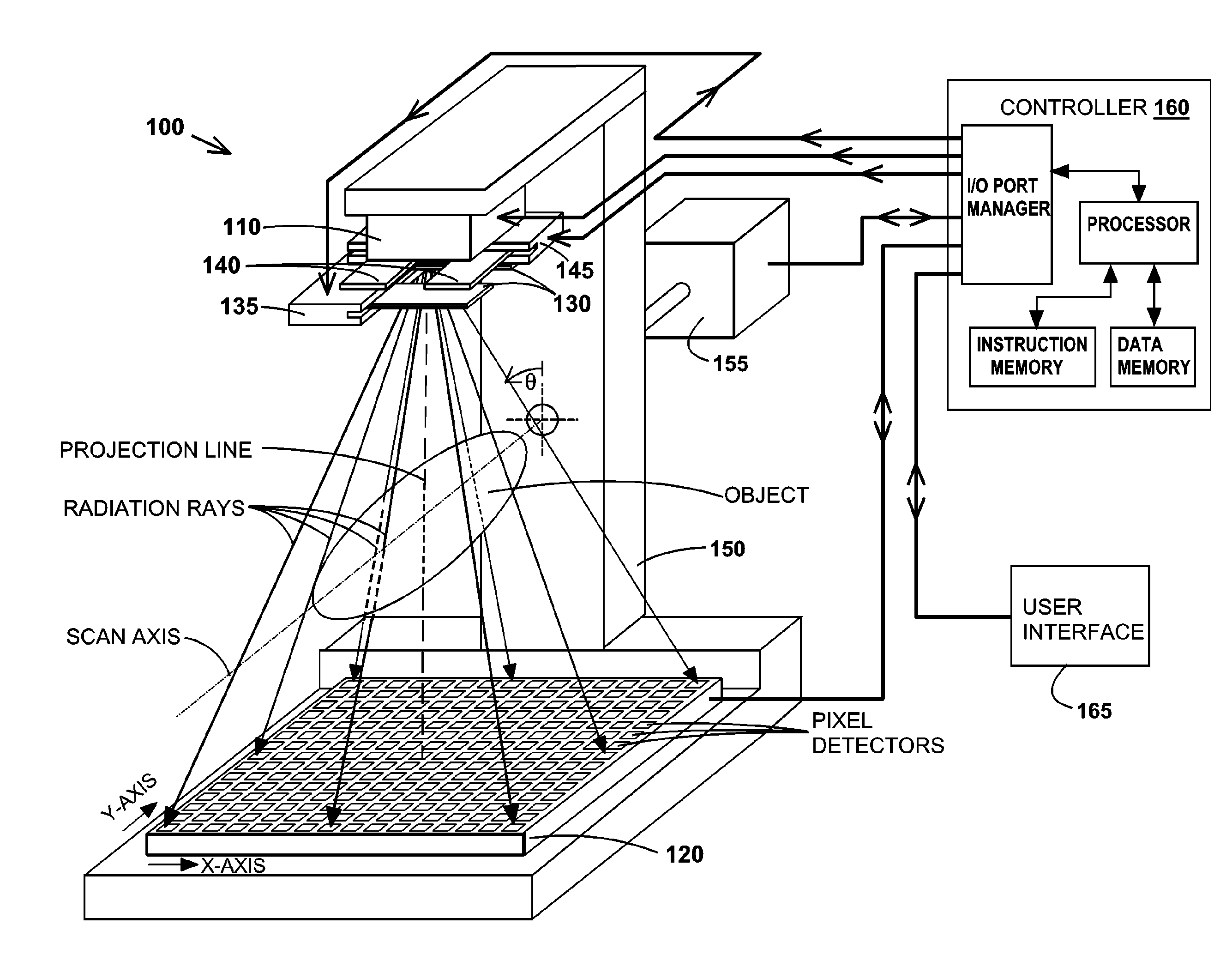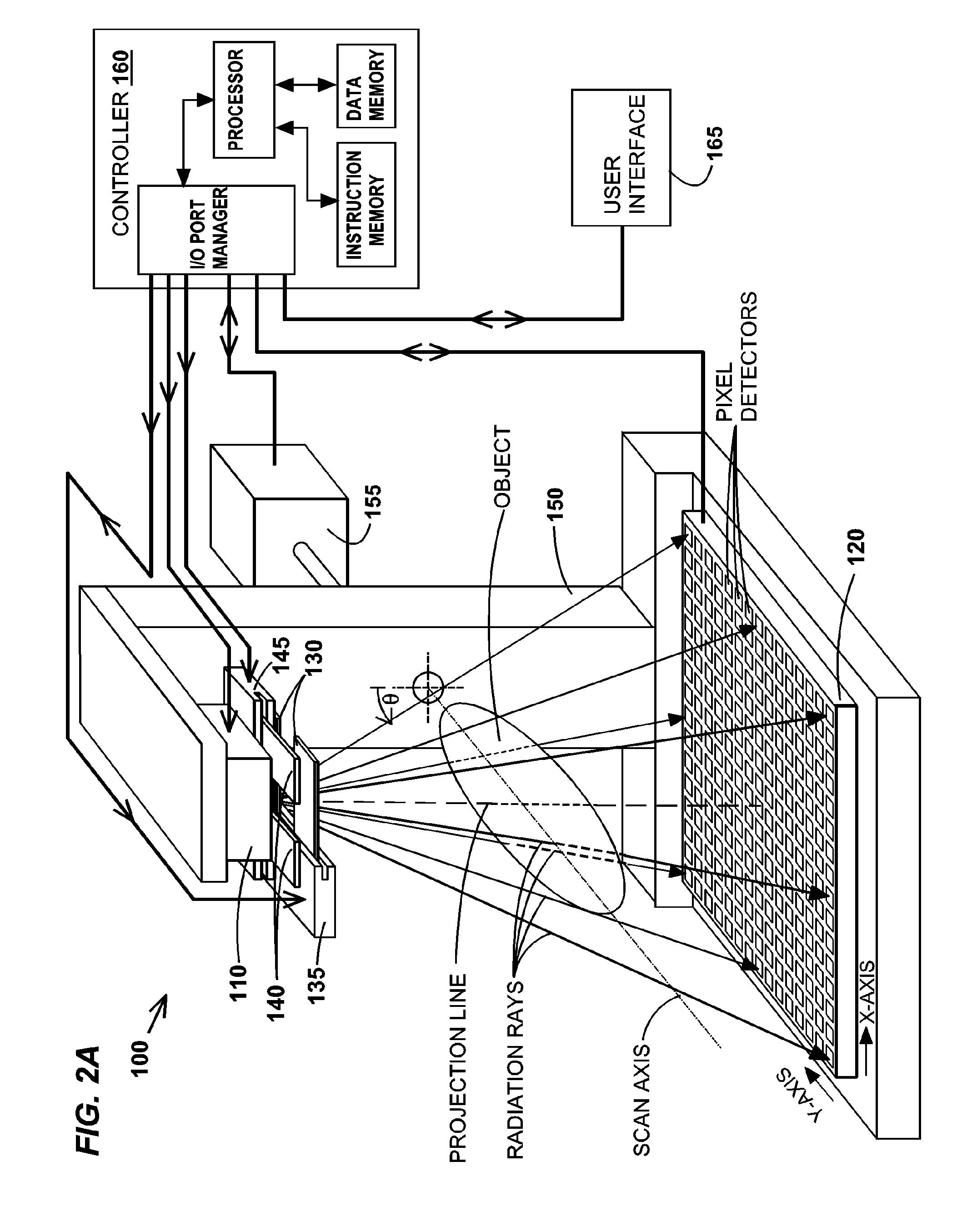Methods, Apparatus, and Computer-Program Products for Increasing Accuracy in Cone-Beam Computed Tomography
a computed tomography and cone beam technology, applied in the field of methods, apparatuses and computer program products for increasing the accuracy of cone beam computed tomography, can solve the problems of non-ideal effects, non-perfect rotational symmetry about the projection axis, and spatial errors in the pixel data generated by the two-dimensional imager, so as to reduce the major source of image accuracy, reduce scattering, and improve the accuracy of the image generated from cbct.
- Summary
- Abstract
- Description
- Claims
- Application Information
AI Technical Summary
Benefits of technology
Problems solved by technology
Method used
Image
Examples
Embodiment Construction
[0029]The inventions of the present application will be described more fully hereinafter with reference to the accompanying drawings, in which exemplary embodiments of the inventions are shown. This inventions may, however, be embodied in different forms and should not be construed as limited to the embodiments set forth herein. Rather, these embodiments are provided so that this disclosure is thorough and complete and fully conveys the scope of the inventions to one skilled in the art. In the drawings, the relative dimensions of some elements may be exaggerated for clarity. The same reference numerals are used to denote the same elements throughout the specification. The elements may have different interrelationships and different positions for different embodiments.
[0030]The terms used herein are for illustrative purposes of the present inventions only and should not be construed to limit the meaning or the scope of the present inventions. As used in this specification, a singular...
PUM
 Login to View More
Login to View More Abstract
Description
Claims
Application Information
 Login to View More
Login to View More - R&D
- Intellectual Property
- Life Sciences
- Materials
- Tech Scout
- Unparalleled Data Quality
- Higher Quality Content
- 60% Fewer Hallucinations
Browse by: Latest US Patents, China's latest patents, Technical Efficacy Thesaurus, Application Domain, Technology Topic, Popular Technical Reports.
© 2025 PatSnap. All rights reserved.Legal|Privacy policy|Modern Slavery Act Transparency Statement|Sitemap|About US| Contact US: help@patsnap.com



